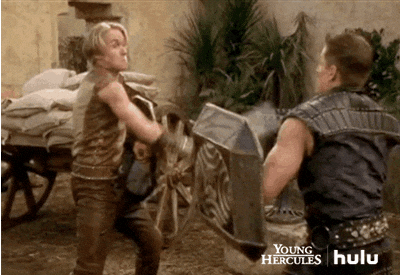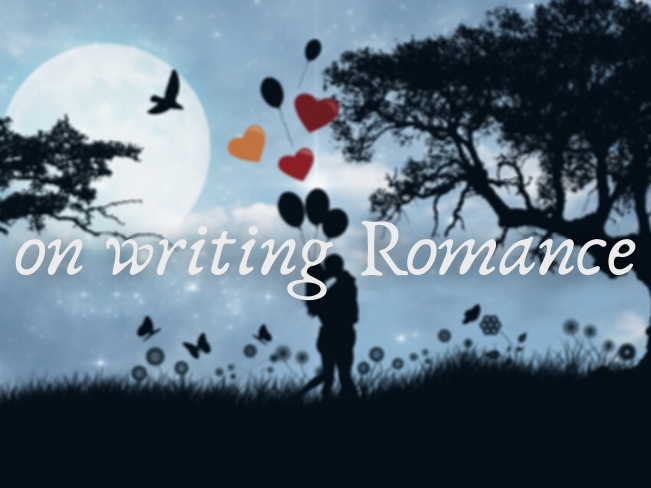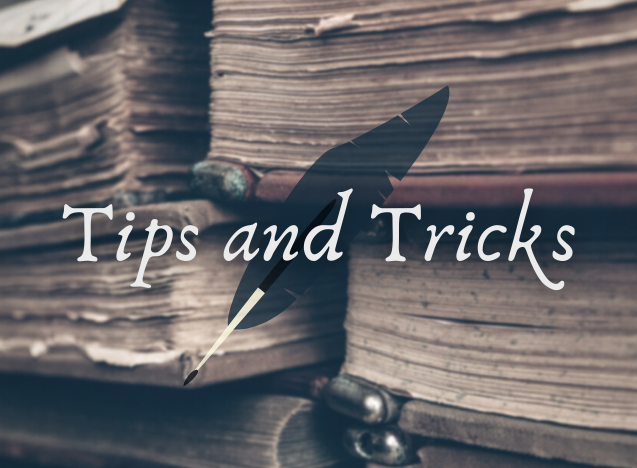When I first started writing, action scenes were among the weakest aspects of my craft. To my chagrin, I had critique partners tell me my duels and battles moved slowly, lacked impact, and (worse still) confused them. Some of the issues with my prose quality were just that: inexperienced line editing, head hopping, etc. But even as I cleaned up my writing, my struggle with action scenes persisted.
What was it about these scenes that made it so difficult for me to keep readers at the edge of their seats? My critique partners couldn’t put their thumbs on it, either. (In fairness to them, we were all newish writers back then, so plz don’t judge them for failing to have the editorial knowledge I’ve since gained.) As far as we could tell, I didn’t have problems with characterization, structure, concept, setting, or any of the myriad other reasons a scene just doesn’t work. At one point, I line edited a scene for wordiness four? five? times, and while edits tightened the prose, readers still felt disconnected from the action.
It wasn’t until I stumbled across an article on Motivation-Reaction Units that I realized I wasn’t wrestling with a story problem, but a logical thinking problem.

What are Motivation-Reaction Units?
Motivation-Reaction Units, or MRUs, take the cause-and-effect chain of writing and reduce it to a micro level. They break each character’s actions and reactions down into a logical sequence of input, deliberation, and output. MRUs connect the reader to the action by allowing them to experience the scene through the POV character’s eyes. They help writers avoid the dreaded traps of ‘telling,’ clunky action, and blow-for-blow fistfights.
The most important thing to keep in mind: MRUs don’t operate at the scene-level, they operate at the paragraph level. In a snappy action sequence, each one might last only a few phrases. Longer ones could stretch for multiple paragraphs. They’re the missing link between sentences and scenes, and their power lies in the invisible organizational structure they provide for readers.
How do I build an MRU?
Good news: this part is way, way easier than you’d think.
I conceive of MRUs as a five-step process. The full five steps aren’t always necessary — sometimes one character’s action/reaction sequence gets interrupted by another one — but they should hit the page in order. For the sake of this example, let’s say our character, Sam, inadvertently gets into a bar fight.
Input
An external event happens to catalyze this five-step process. In this case, a drunken patron takes a swing at Sam. For direct, physical action, it’s best to keep this description short and sweet. ‘The big drunk on the left took a swing at Sam’s head.’
Instinctual/Flinch Response
Now, the character’s hindbrain kicks in. Think: pulling a hand off a hot stove. This is an automatic, unconscious response to a stimulus. In this case, we could write ‘Sam ducked.’ If Sam doesn’t duck, I consider the pain response a subset of this category. ‘His fist connected with Sam’s ear, hard enough to set it ringing.’ Here’s the place to describe the pain, too, since it’s what the character will process after their flinch response.*
*Sometimes the injury is so severe and the pain so intense that there’s a delayed response, and the character processes what happened before the pain hits them. This is certainly true to life, but I’d recommend using it only for serious, serious injury, the gravity of which is already implied to the reader.
Conscious Response
Here’s the first time we get conscious processing from the character. This is usually expressed through internalization, though sometimes an exclamatory phrase will work. (ie: in the case of the stove top, “OW that was hot!”)
Our buddy Sam, having thankfully ducked the punch, might think, ‘Hell, that idiot tried to hit him!’
Deliberation
After mentally processing what happened, now our character can make an observation, deliberate, and decide upon a next step. In an elaborate fight scene, this is where a character could eye an escape route, plan a trap, or weigh the consequences of a crazy scheme. Sam’s line of thinking is simpler, but apt: ‘The bar erupted into chaos. A woman with a full sleeve of tattoos swung a chair at another patron’s head. Nope, nope, nope, he wanted absolutely no part in this. Time to go.’
Reaction
Finally, reaction. A character might go to the sink to run their hand under cool water, enact their dastardly plan, or in Sam’s case: ‘Sam grabbed his wallet and bolted for the door.’

Now that we’ve filled in the steps of our MRU, it reads like this:
The big drunk on the left took a swing at Sam’s head.
Sam ducked. Hell, that idiot tried to hit him!
The bar erupted into chaos. A woman with a full sleeve of tattoos swung a chair at another patron’s head. Nope, nope, nope, he wanted absolutely no part in this. Time to go. Sam grabbed his wallet and bolted for the door.
While not the most sparkling recount of a bar fight, it illustrates how the logical sequence grounds us in the scene alongside the character. I’m convinced that playing fast and loose with logical sequencing forces the reader to concentrate harder in order to understand what’s going on. This concentration slows the reading pace and distances the reader from the narrative because they’re working so hard to block the scene in their head. In the same way head hopping, filter words, and dense infodumps can pull the reader out of the story, so too can broken logic sequences in action scenes.
Check this out:
The big drunk on the left took a swing at Sam’s head.
Hell, that idiot tried to hit him! Sam ducked.
Nope, nope, nope, he wanted absolutely no part in this. Time to go. The bar erupted into chaos. A woman with a full sleeve of tattoos swung a chair at another patron’s head. Sam grabbed his wallet and bolted for the door.
I’ll allow that part of the reason this excerpt sounds ‘off’ is because of changes in the rhythm of the prose. That said, it also doesn’t work as well from a logical perspective. In my opinion, it requires greater concentration to follow the action, Sam’s surroundings, and Sam’s decision-making process. In other words, it asks the reader to do more work.
Keeping MRUs in mind while writing takes that burden off of readers’ shoulders.

The only rule is: There are no rules
I’m not a fan of prescriptive writing rules, so I’ll add this caveat: prose is complicated, MRUs aren’t infallible, and rules can all be broken. The most important thing is that the writing works. If it ain’t broken, don’t fix it.
MRUs will get more complicated with interrupting action that leaves the POV character no time for processing. You can manipulate this idea to give the illusion of a fast-paced, chaotic battle. On the flip side, taking more time to go through the steps in completion could work well for a high-stakes poker game or a sex scene. MRUs can and should be tweaked and refined to suit your story.
While I’m never a proponent of literal faithfulness to any writing rule, MRUs are a great template to have in your writing toolbox. Keep them in mind while you write your next action scene (or action scene, wink wink) and see if they help you better organize your writing. They might identify areas were you tend to skip steps or get ideas out of order. At the very least, they can serve as a post-drafting diagnostic to help you figure out why your pacing is rushing or dragging.
For my part, MRUs taught me how infrequently I had characters internalize during a fight. When I did include internalization, I used to put a paragraph of it between action fragments. These chonks of poorly integrated thought plummeted my tension and slowed my pacing. Figuring out how to integrate internalization in snappy action sequences was a breakthrough moment for me; hopefully you’ll learn something useful, too!
(Even if that useful thing is that you’re already doing it right ;)).
And remember, MRUs are one tool among many for great writing. If they don’t work for you, that’s okay, too.
Let’s talk MRUs in the comments!
- Have you ever used MRUs? Do you like them? Dislike them?
- If you haven’t, how do you structure your action scenes?
- Do you have any tips or questions for fellow writers? Let us know in the comments!


 Braiding Prose
Braiding Prose Romance and the ‘Other’
Romance and the ‘Other’ Writing Vivid Description
Writing Vivid Description
Leave a Reply